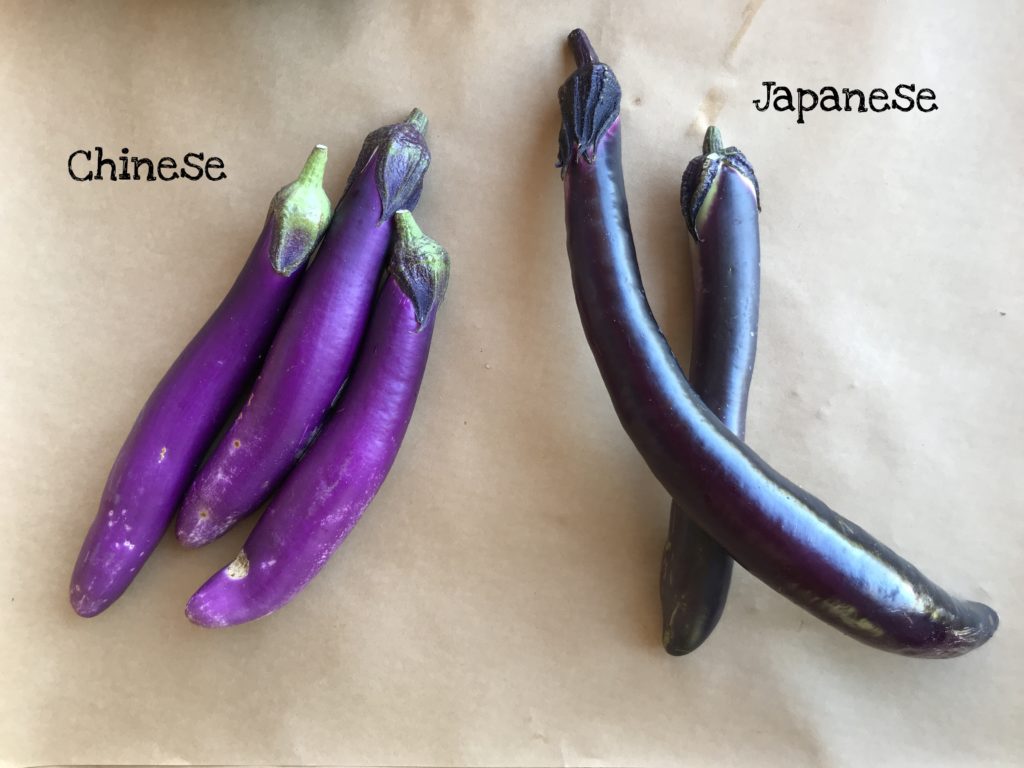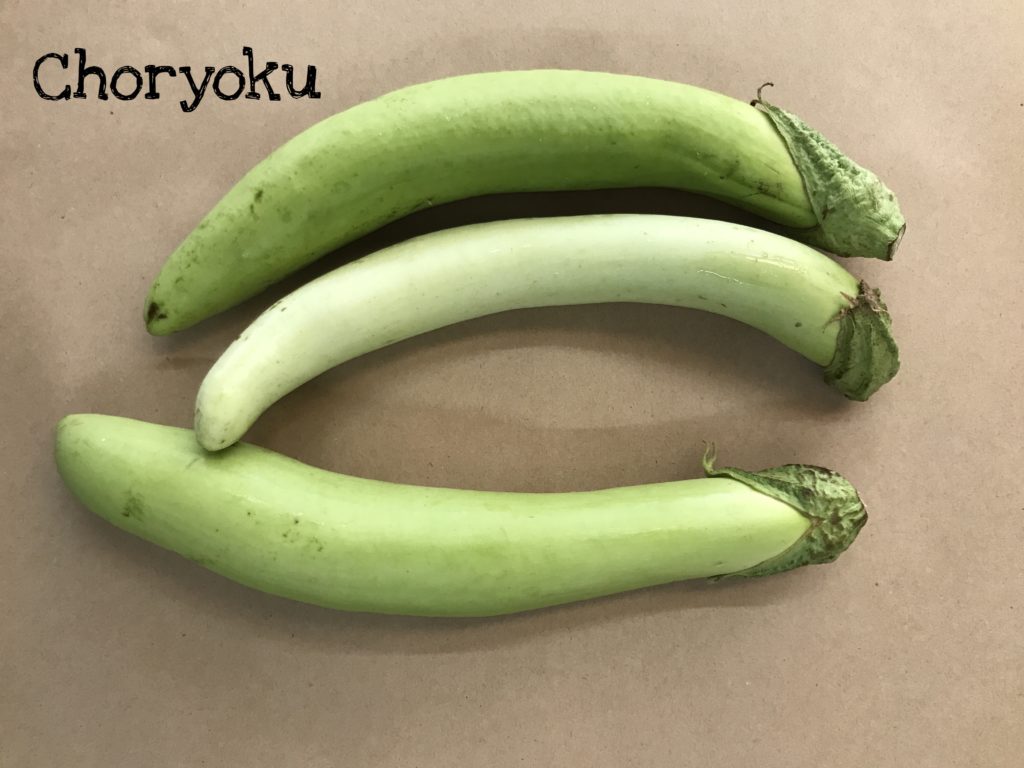Leeks on the farm serve as a fall and winter alternative to the classic yellow and red onions we have during the summer. There are many noteworthy benefits that can be found in this vegetable including anti-oxidants, calcium, magnesium, and vitamins such as A, C, K, E. Leeks are best stored by wrapping them in paper towels and placing them in the fridge. It is best to consume them within the week.
greens
We grow many varieties of greens when we can. The summer is too hot but we grow greens during the cool seasons (winter, spring, and fall). Storage for bunched greens is fairly similar across the board- store them in your refrigerator, unwashed, and eat them as soon as possible to get all of their amazing nutritional benefits.
We grow hearty greens (like chard, collards, kale) and tender greens (like arugula, mizuna, and spinach).
We have separate pages with more information about those varieties and recipe ideas for hearty greens here and tender greens here.
grapes
Full Belly grapes are a relatively new addition to the farm, but they sure are tasty! The farmers grow green and red seedless, muscat and other seeded varietal grapes, all of which carry important nutritional value. Grapes are rich in resveratrol, a powerful antioxidant which plays a protective role against cancers, heart disease, nerve diseases, Alzheimer’s, and reduces the risk of stroke. Grapes should be stored, unwashed, in a paper bag or perforated plastic bag, for up to a week. Grapes are available in the summer and fall months.
figs
Full Belly figs are a real treat. We grow black mission, brown turkey, and kadota and sell our figs fresh and dried. In addition to being packed with antioxidants, figs also have high levels of vitamins A, E, and K. Dried figs provide a concentrated source of nutrients and minerals, such as calcium, copper, potassium, iron, and zinc. Figs should be eaten as soon after you get them, but can be kept in the refrigerator for 2- 3 days.
fennel
Fennel can add a splash of surprising flavor to just about anything it is added to. Full Belly farmers love fennel for its crunchy texture and sweet flavor, and often add it to salads, soups, and roasted vegetables. Fennel, in addition to being a tasty springtime treat, has noteworthy essential oils, flavonoid antioxidants, minerals, and vitamins with known health benefits. Fennel has high levels of vitamin C, potassium, and is a high fiber vegetable.
cucumbers
Cucumbers are a staple of the summer diet at Full Belly. The farmers have been known to slip them into just about everything- salads, cold soups, salsas. Full Belly grows slicer, Armenian (also called Painted Serpent), pickling cucumbers, and suyo long. Slicer cucumbers can be identified by their dark green skin, often thick, and their smooth skin. Armenian cucumbers can come in all shapes and sizes and are sometimes quite large. They can be identified by their striped skin, which does not need to be removed before you enjoy them! Pickling cucumbers are a bit drier with a crisp, snappy skin that can retain its crunch even after pickling. Cucumbers are high in vitamin K and potassium. Store cucumbers dry, in the refrigerator, for up to a week.
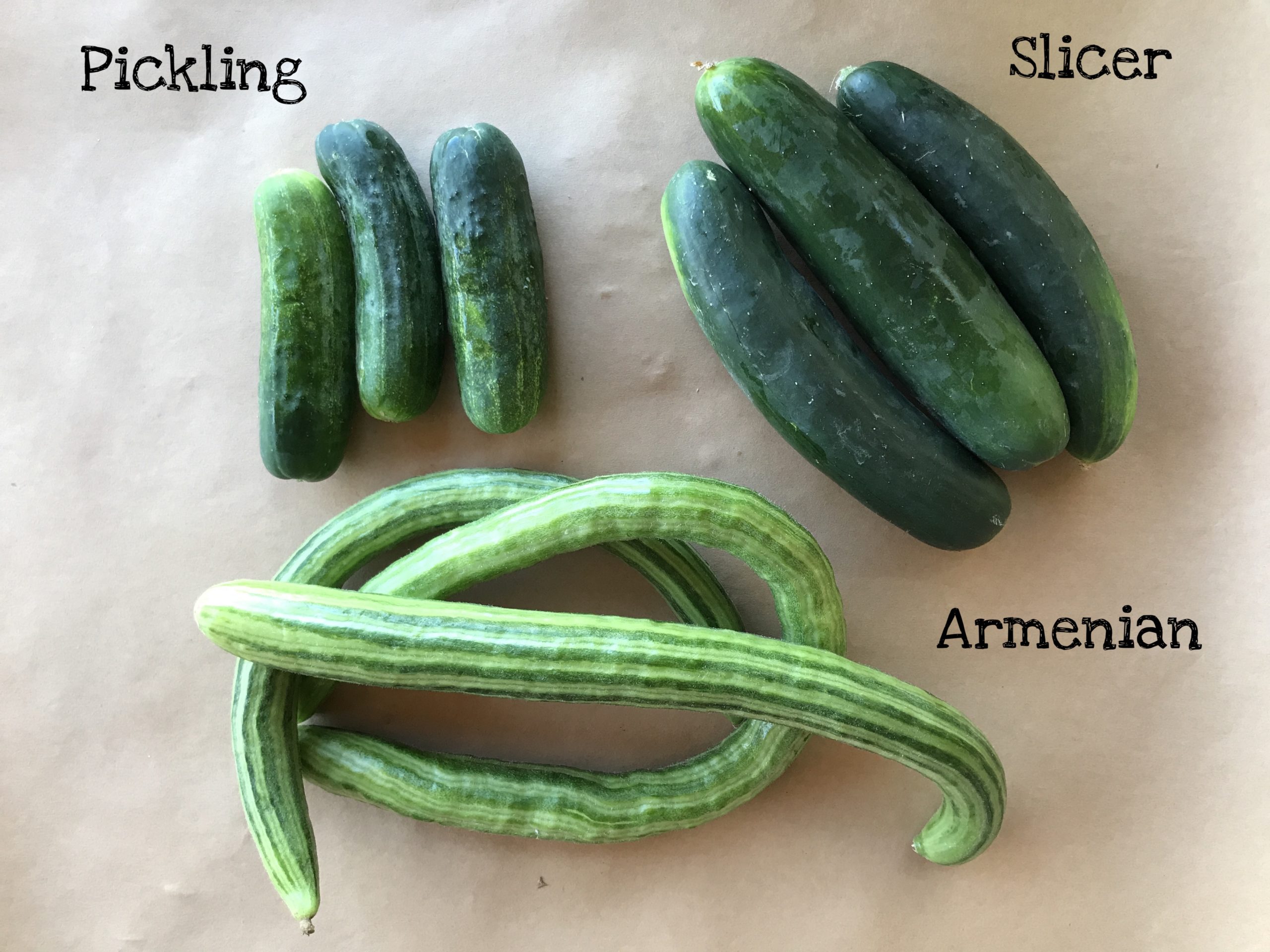
corn
Corn is a wonderful addition to any summer meal. Full Belly Farm’s corn can often have small amount of worm damage in the tip. If you encounter an ear with worm damage, simply chop off the tip and enjoy the rest of the ear! Fresh sweet corn is a good source of ferulic acid, which plays a vital role in preventing cancers, aging, and inflammation. Corn is also a great source of thiamin, niacin, folates, riboflavin, and magnesium. Corn should be eaten as soon as possible after it is picked, as it loses sweetness and nutritional value the longer it is off the stalk. Store corn, unhusked, in the refrigerator for up to three days.
See this article for tips on cutting the kernels off the cob.
celery root
Celery root is a great wintertime vegetable that can be easily roasted, mashed, pureed into soup, and even eaten raw. The Full Belly folks love to use celery root because of its wonderful celery flavor and smooth, creamy texture. Celery root is a great source of dietary fiber, vitamin C, vitamin K, and potassium. it can be stored in the produce drawer of your refrigerator for up to 2 weeks. To prepare, simply trim off the tops, cut off the outer skin, and prepare to your choosing.
carrots
We’re pretty famous for our carrots, and if you’ve tried them, you know why. Full Belly Farm’s carrots are a delicious variety called Nantes, known for their crisp, snappy texture and sweet taste, no peeling required. You can learn more about how we grown and harvest carrots here.
Carrots can be stored in the refrigerator for 1- 2 weeks; remove the greens first. You can eat the greens too! They taste like a cross between carrots and parsley and can be eaten raw or cooked.
cabbage
The cool months in the fall, winter, and spring allow us to grow green cabbage, red cabbage, and napa cabbage. Cabbage is a hearty vegetable and one of the most versatile around with numerous raw, cooked, and fermented applications.
broccoli
Broccoli is a wonderful cool weather crop that grows with great abundance at Full Belly Farm. To make the most out of this nutrient rich crop, be sure to eat it when it is fresh. Broccoli can be stored in the refrigerator, in a plastic bag, for a few days. Make it simple — just chop it up and steam it, or be more adventurous and make it part of a hearty soup! Make sure to eat the stem too; it’s the sweetest part of the plant, although you may want to peel it if the outer part is too thick and fibrous.
beets
Deborah Madison’s beautiful cookbook, Vegetable Literacy (Ten Speed Press, 2013), has a wonderful section on beets. She writes: “Beet are also full of sugars — think of sugar beets, from which sugar is made — and these two qualities, the earthy and the sweet, oppose one another and confuse the mouth. At least I’m convinced this is so. I’ve long believed that acid in the form of citrus juices or good vinegars make a bridge between these elements and unites them in a way that makes beets much more likable.”
Beets are such a versatile vegetable! We grow gold, red, and Chioggia (candy stripe) beets. All have a sweet, earthy taste, though gold and Chioggia are a tad sweeter and Chioggia are a little milder (and won’t stain!). Beet roots can be eaten raw or cooked (roasted, boiled, steamed, and more). Roasting takes the longest but will yield the most flavorful and sweetest results.
Beet greens are edible too; they’re like a heartier, thicker chard. We recommend separating the roots from the leaves before storing both in bags in your refrigerator.
green beans
Full Belly beans are some of the most labor intensive crops we grow- harvesting each bean by hand can take hours. Green beans are an excellent source of both fiber and vitamin A, and also fuel human bodies with folates and iron. Fava Beans are an excellent source of protein, iron, copper, and fiber. Beans should be stored in the refrigerator, unwashed. Beans are available in the warm summer months of June, July, August, and September.
basil
Basil is an essential component to most summertime meals at Full Belly. We grow it in between rows of eggplant so that we have a place for the tractor to go when we’re harvesting from the tall eggplant plants in the middle of summer.
Basil doesn’t like to be cold; the best way to store it is in a glass of water, like you would a bouquet of flowers, and many people recommend covering with a plastic bag to keep in the moisture, though take it off to breathe if it builds up too much condensation. Stored this way, it can last up to two weeks! You can also store dry in the refrigerator, but it won’t last as long.
Basil can go to flower quite easily; if you get basil with flowers, the leaves are still edible, and the flowers can be enjoyed too, as a garnish or in any dish, and they can be used to make teas or flavor oils.
asparagus
Asparagus is an amazing crop. It is the only crop that we must harvest every day of the week because if we skip a day it will grow too tall. It is a particular crop, needing ideal growing conditions of temperatures between 65- 85 degrees to encourage growth. Asparagus is available from Full Belly Farm from March to May, though the season can fluctuate with the changing spring temperatures. You can learn more about how we grow and harvest asparagus here or here.
Be sure to store your asparagus in the refrigerator. If you have the space, put it in a container with a bit of water (like flowers) and cover with a bag. Otherwise, keep in a bag in your high humidity drawer and you can reinvigorate wilted spears by trimming the bottom 1/2 inch of the stalk and placing the ends in tepid water.
asian pears
Full Belly’s Asian Pears are a tasty fall treat. We grow Hosui, Shinseiki, and 20th Century varieties. Asian pears are the oldest known cultivated pear and are a great source of fiber and vitamin C.
Hosui are golden-bronze with thicker, russeted (rough) skins, Shinseiki are yellow and smooth, and 20th Century have green-yellow skin (like a gold delicious apple). All are sweet, juicy, and crisp. Asian pears are also sometimes called “apple pears” as their texture often resembles an apple.
Please handle Asian pears carefully- they bruise quite easily! Whole, unwashed Asian pears will keep 1 to 2 weeks when stored at room temperature and up to three months when stored in the refrigerator. Asian pears will continue to ripen after picking, so if you’re not going to get to them quickly, keep them in the refrigerator—but let them come back up to room temperature before eating for best flavor.
artichokes
Botanically, Artichokes are a member of the thistle family and, if they are left to flower, grow beautiful flowers that can be dried and enjoyed for years. Artichokes are a great source of dietary fiber and help in cholesterol reduction (only when they aren’t enjoyed with butter or mayonnaise!) Artichokes are best when they are fresh, but can be stored in the refrigerator for up to a week.
apples
Full Belly’s apple orchard is small but mighty, producing Granny Smith, Fuji, and Arkansas Black varieties. Apple trees appreciate cooler climates, and Full Belly’s hot summer days can often cause stress for our trees, making the apples perfect for juicing. Apples can be stored on your counter for a few days, or in the refrigerator for several weeks.
melons
Full Belly has been growing melons and watermelons for 30 years, and we constantly try new varieties, changing the mix, striving to find melons that grow well here and taste delicious. We love growing melons and are well known for some of the best melons around. We grow many different varieties of melons, all of them unique in shape and flavor.
We try to make the melon season last as long as possible. In the spring, to get a jump on the season, we transplant baby melon plants into the cold soil. Once the weather heats up, we direct seed our melon. We start harvesting melons in June and depending on the weather, we could have melons through mid-October! See below for a description of many of our melon varieties, plus photos.
Once you’ve brought your melon home, if you aren’t eating it immediately, optimal melon storage depends on the melon type:
- Watermelons should be kept at room temperature (out of direct sunlight) and should not be stored in the refrigerator until right before you are ready to eat them because if they are refrigerated for too long, the flesh gets mealy. They will keep for 7-10 days and should be kept in a cool spot. Note that watermelons do not ripen off the vine.
- Other melons can be stored on the counter for a day or two but if they are very ripe (and we try to harvest our melons as ripe as possible) or you won’t be eating it for a days, we recommend storing them in the refrigerator to slow down the ripening process and then bringing the melon to room temperature right before eating.
Once cut, melons and watermelon can be stored in the refrigerator for up to three days, either cut up in a container or left whole and wrapped with plastic wrap (or an eco-friendly alternative). Our favorite way to eat melons is cut in half, remove the seeds (except for watermelon) and then dig in with a spoon.
We really try our best to make sure you get a good melon, but it can be hard to tell from the outside how it’ll be inside. If you find it to be a little lackluster, there are a few ways to help it out. Popular ideas are a small amount of salt (really! Check out this article.), some acidity (lemon or lime juice), or herbs, like mint or basil. Another idea is to chop it into chunks, freeze, and then make a smoothie/slushy with the frozen chunks, potentially also adding a little bit of fresh fruit or juice, sweetener of your choice, and perhaps some herbs, like mint or basil. Melons also make a refreshing juice which can always be turned into popsicles.
Our Melons
Canary: Canary melons have bright yellow skin and a crisp, super-sweet creamy-colored flesh. They don’t have much of an aroma, so don’t look to that for a sign of ripeness.

Charentais: A French, wonderfully aromatic cantaloupe with a round shape and smooth skin gray-green rind with dark green ribs.
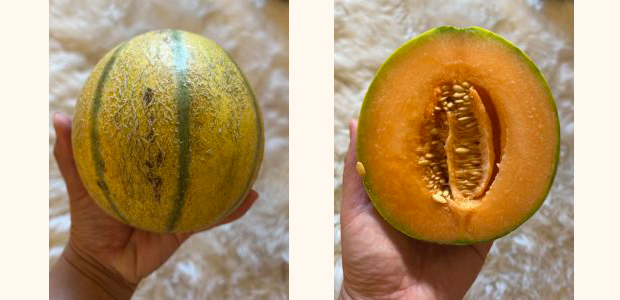
Galia: Galia melons were developed in the 1970s by crossing a honeydew and a cantaloupe variety. It looks like a cantaloupe on the outside and a honeydew on the inside but has its own unique, tropical flavor. It is a very round melon with smooth, netted skin that turns yellow when ripe.
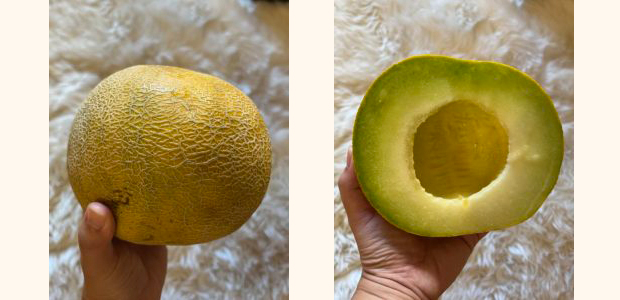
Goddess: Looks and tastes a lot like a cantaloupe – but don’t let it trick you! The netting on the skin of a goddess melon is not as raised as that of a cantaloupe and the flesh is softer. Goddess melons have a very fruity flavor and are delicious in smoothies!
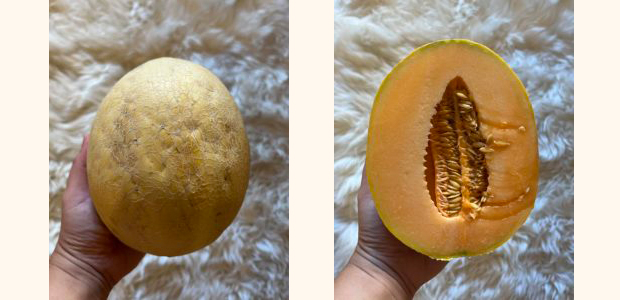
Haogen: thin yellow/green skin with green ribs and a green interior. Unique tropical flavor, strong aroma, and soft flesh.

Honeylope: This honeydew-cantaloupe cross has the pale green skin of a honeydew, orange flesh like a cantaloupe, and a mild but sweet taste and crunchy texture that more closely resembles a honeydew.

Piel de Sapo: Piel de Sapo means “toad skin” and this melon is also known as a Christmas melon or Santa Claus melon. It has a oblong, football shape with yellow and green speckled skin. The flesh is light green and more crispy than other melon varieties. It doesn’t release an aroma when ripe.

Sharlyn: A farm favorite! It is oblong shaped with netted skin. Inside it has flesh that can be ivory, white, or pale orange. They have a fruity and floral aroma with tropical notes and a sweet, fruity flavor and a creamy texture.
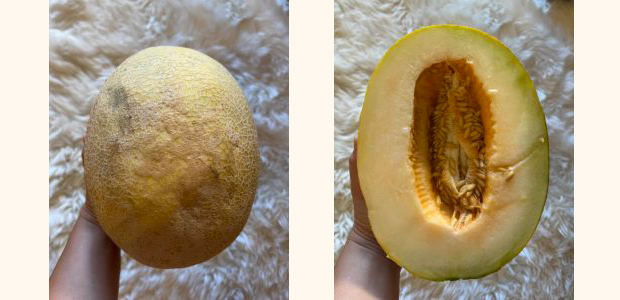
Watermelons: Our watermelons come in all sizes and colors. We only grow seeded watermelon. All are sweet, juicy, and seriously delicious! We currently grow Crimson Sweet, Orchid, Sugar Baby, Yellow Doll, Estrella. Crimson Sweets, Sugar Baby, and Estrellas are red. Sugar Babies (in the photo below) are quite small, Estrellas are large and oblong, and Crimson Sweet are a medium/large oval melon. Orchids (in the photo below) are orange fleshed and Yellow Dolls have bright yellow flesh.
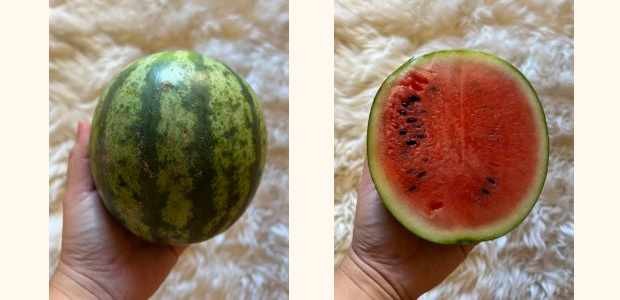

Photo credit: Tanya Tran (@FeedTheThrill)
eggplant
Eggplant brings a bright splash of color to the summer- and a whole host of delicious flavors! Full Belly generally cultivates several varieties including Italian, globe-shaped (Globe, Listada, Rosa Bianca, and Paloma) and Asian(Chinese, Choryoku, and Japanese) varieties. Eggplant has many nutritional benefits, including being a great source of manganese, copper, iron, and potassium. Eggplant can be kept on the counter or in the refrigerator for a few days. Use it before it goes soft and limpy.
You can eat the skin on young eggplants, but the skin of older ones may require peeling. If they are concerned that the eggplant may have a bit of bitterness, some chefs like to sprinkle salt on their eggplant slices or chunks, and let them rest for 30 to 60 minutes in a colander until they begin to give up water. Rinse them well, pat them dry, and proceed with your recipe.
When you’re not using the above technique, cut eggplant just before cooking, as its flesh quickly discolors.
Italian Varieties:
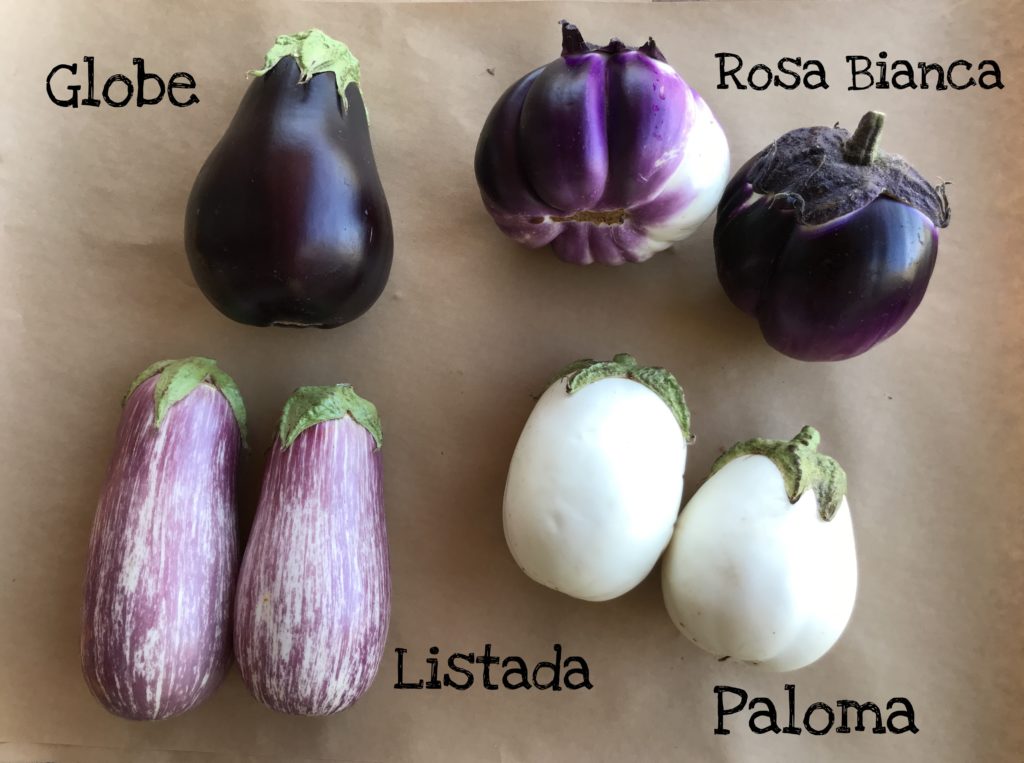
Asian Varieties:
